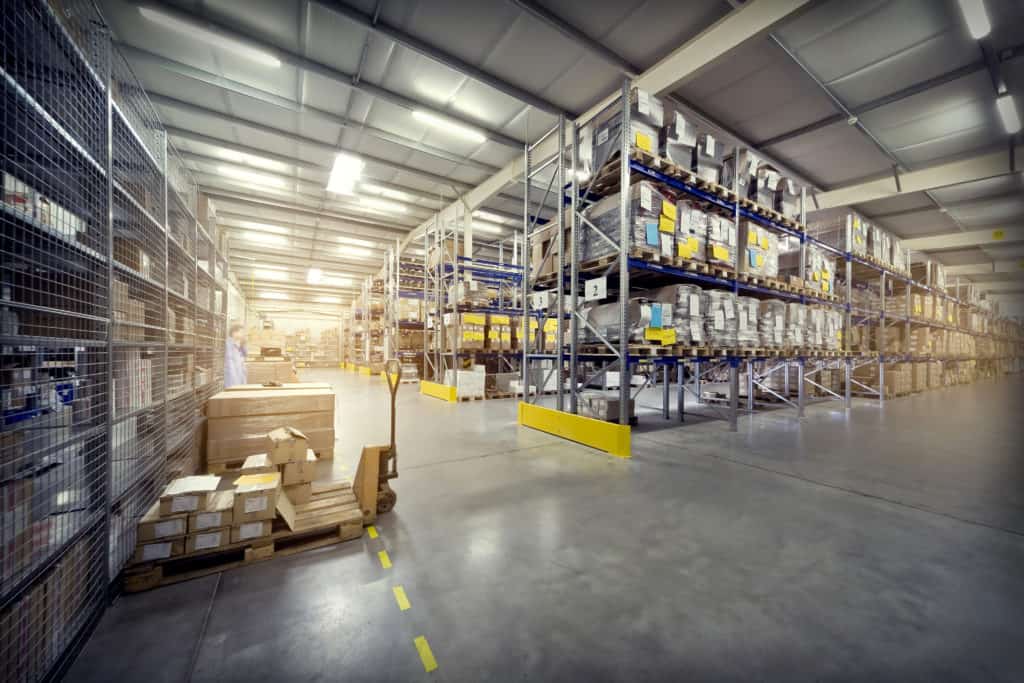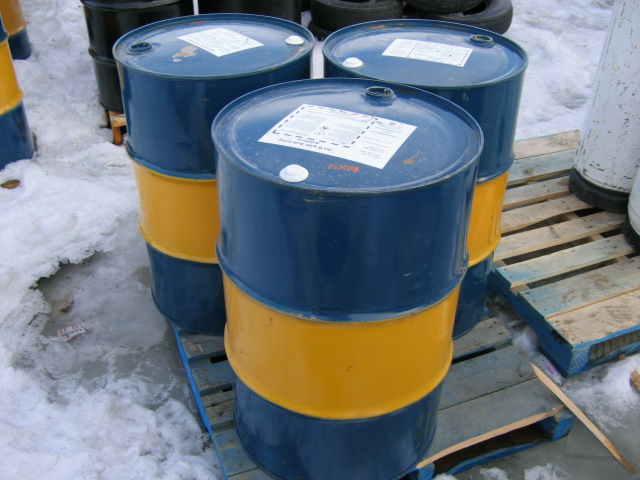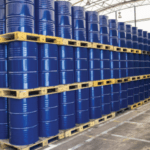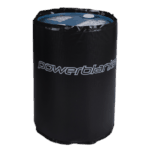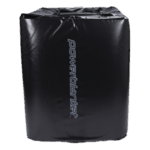When the temperature drops, you can end up losing a lot of money to heating an inefficient warehouse. Instead of throwing money away this winter, make sure you prep your warehouse for the cold weather. There are several low-cost actions you can take to keep your warehouse warm during the winter.
Radiant vs Forced Air
There are many factors when considering infrared vs forced air heating. Each heating method has advantages and disadvantages depending on the environment they are used in. Which one is best for your warehouse?
Radiant heaters use infrared light to heat surfaces and materials under the heater. Heating surfaces instead of air is more economical and effective when heating large areas with high ceilings. Radiant heat is also the preferred method for poorly insulated facilities or buildings that have garage doors opening throughout the workday. However, in well insulated areas with shorter roof heights, radiant heating isn’t as effective. More heaters are needed to cover large areas with low ceilings.
Forced air heaters are excellent in well-insulated areas with many smaller rooms and ceilings below about one story high. One heating unit can be used and the air can be forced throughout the facility to heat many small areas. For high ceilings, the hot air will rise and won’t heat the lower levels where people and product are. In facilities with large bay doors opening regularly or that are poorly insulated, the hot air will escape before it has a chance to heat the product.
Challenges and Solutions to Heating a Warehouse
Heat loss in your warehouse also means lost money. It can be hard to pinpoint problem areas or know what solutions work best for your specific space. The following are some of the most common things to be aware of when it comes to heating your warehouse efficiently:
Windows and Doors
Problem: One of the main reasons for losing heating efficiency in your warehouse is due to inadequate insulation around windows and doors. The seals around your windows can start to break down over time, allowing cold air to flow inside.
The Fix: If you have windows in your warehouse, make sure they’re properly insulated. Check for cracks around the paneling, hinges and the glass itself. Adding more weather stripping in problematic areas can go a long way in keeping the heat inside. The same applies to doors, especially the larger ones. If you’ve experienced high heating costs in the past, you may find this an easy remedy to your problem.
On a separate note, having windows in your warehouse can actually help with heating costs, provided they are properly insulated, of course. This is simply because windows will let in natural light and offer the heat that comes with it. This is especially true with large skylights.
Ceilings and Floors
Problem: Here’s another reality to keep in mind. Because hot air rises, the ceiling of your warehouse may be more adequately heated than the floor. You may keep turning up the thermostat without noticing a difference because all the warm air is not where you can feel it.
The Fix: In order to solve this problem, make certain you have the proper means in place for good air circulation. In fact, before winter even starts, you should check the status of your heating and duct system to ensure that everything is operating to full efficiency. An old furnace and clogged air ducts can cause as much heat loss as poorly insulated doors and windows.
What’s more, you should segment areas of the warehouse that don’t need as much heat regulation from areas that do. Only heat what needs to be heated. If a certain section of your warehouse is used for storing materials that aren’t in need of temperature regulation, then partition it from the rest of the warehouse and don’t waste any heat on it.
Temperature-Sensitive Storage
Problem: Anyone who stores temperature-sensitive products in their warehouse knows how ambient temperatures affect the material stored within the same space. If you need your storage to remain at room temperature, then the air around it is going to need to be even warmer. This could amount to elevated heating costs and a significant yearly investment. But there are a few things that can be done to limit this exchange.
The Fix: To start with, if you’re storing metal containers full of temperature-sensitive material on a cement floor (common in most warehouses) then you are going to lose a lot of heat through the floor. Consider how well cement keeps in the cold and how well metal transfers temperature. To help solve this problem, you can keep something between your storage and the floor, such as a wooden board or pallet for example.
Additionally, it would be very wise to insulate your storage against the cold. Wrapping your barrels, drums, totes, and other storage units in a sufficient insulator can help maintain their temperature without the need for turning up the heat. Find more information about the benefits of drum heaters here.
Understanding the layout and specific heating needs of your warehouse will help save money. In addition, choosing the right heating system will ensure that your storage is protected and employees are comfortable.
Frequently Asked Questions
What’s the best way to heat a warehouse?
Radiant heating systems are ideal for large warehouses with high ceilings, as they efficiently heat surfaces and objects directly, providing even heat distribution.
What is the cheapest way to heat a large warehouse?
Gas-fired air rotation systems are cost-effective for large warehouses, as they circulate warm air uniformly, maintaining consistent temperatures with low operational costs.
What is the rule of thumb for heating a warehouse?
A general guideline is to use about 10 watts of heating power per square foot of warehouse space to ensure adequate warmth.
How do you heat a cold warehouse?
Warm air heating systems, which use fans to disperse heated air throughout the space, are effective for maintaining desired temperatures in cold warehouses.
Powerblanket's industrial drum & barrel heaters provide even and consistent heating, eliminating waste and lowering costs.


